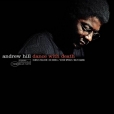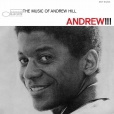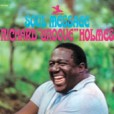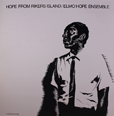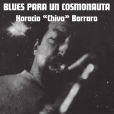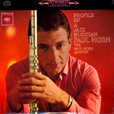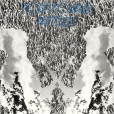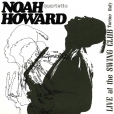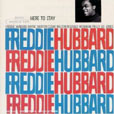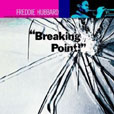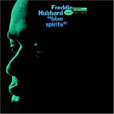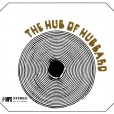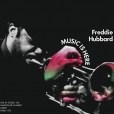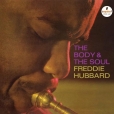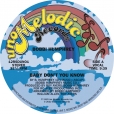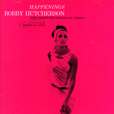Your basket is empty

The Arkestra first started rehearsing at pianist Linda Hill’s house in the early 1960s. ‘In a few months, we’d built up from seven or eight to about eighteen cats, musicians started living there,’ Tapscott recalls in his autobiography. ‘People got involved with the Arkestra like it was their life’s work.’
Opening with the spiritual jazz epic Leland’s Song — a duet with flautist Adele Sebastian — this LP was recorded for Nimbus West by Hill in 1981, with fellow Arkestra members including Sabir Matteen, Roberto Miranda and Everett Brown Jr.
RH came through with Les McCann and Gerald Wilson. Prestige tried him out with Gene Ammons and Joe Pass, before this trio debut as leader, in 1965.
Top-notch, archetypal soul jazz — the opener states the case, the closer sums up — hard-swinging, blues-saturated, lots of chords, propulsive bass, open and gritty.
Nicely Latinized version of Song For My Father.
Worth it just for the brilliant John Gilmore, from 1963. Boykins and Philly Joe in the house. We love Elmo, too — that’s him on Harold Land’s The Fox. Marcelle Daniels’ vocal version of Groovin’ High is a gem.
Available on vinyl for the first time in forty years, Horace Tapscott’s burning, spiritualised 1978 set is a masterpiece of the Los Angeles jazz underground.
It’s drawn from two studio sessions in April 1978, one at Hollywood Sage and Sound, one at United Western. The latter session added a string section, which can be heard on the moody Cal Massey composition Nakatini Suite and Jesse Sharps’ swinging modal trip Peyote Song No. III, with its swirling soprano solo. In keeping with the communal nature of the Arkestra, the other two compositions, The Call and Quagmire Manor at Five A.M. are also by Arkestra members. But at the centre of the music is the builder of the Ark, the visionary whose original call to action started a movement whose legacy continues to this day — Horace Tapscott.
180g audiophile vinyl in a painstakingly reproduced sleeve.
Heed The Call!
‘From 1971, the first LP the altoist self-produced for his own Altsax label; recorded in the Netherlands during Howard’s second stint in Europe, with an intriguing lineup including Misha Mengelberg and Han Bennink.
‘Howard’s saxophone work alternates between leading with passionate, lyrical lines and blending into the collective improvisation. The dynamic interplay, particularly between Mengelberg’s dissonant piano clusters and Bennink’s thunderous drumming, creates a vivid sound painting full of contrasting forms and colours. Patterns remains one of Howard’s most unique, visionary and celebrated recordings.’
With Michael Smith on piano, Noel McGhie on drums, and Bob Reid on bass, in April 1974; originally released by Calumet Records.
‘Classic vinyl.’
In the ‘Blue Note Classic Vinyl’ series.
‘Audiophile analogue remastering.’
The trumpeter in peak form, leading a crack band through extended versions of CTI killers like Povo and First Light.
Kent Brinkley and Michael Carvin from Hugh Masekela’s band; George Cables from Child’s Dance and Capra Black; Horace Silver’s saxophonist Junior Cook, playing with surprising intensity.
Recorded in 1973 for French radio.
For Michael Carvin — who in the next couple of years would play on Pharoah Sanders’ Elevation LP, and Lonnie Liston Smith’s Expansions — the session was something else: ‘I felt that we were being used by a higher force. That’s the first time we played that way, and it was the last time we played that way. We actually got the lightning in a bottle, we caught the magic… we caught it.’
Aged 25, signing off Impulse! with a wayward flourish, Hubbard plays beautifully throughout, boldly leading an orchestra and string section, 16-piece big band, and a septet with Curtis Fuller, Eric Dolphy, Wayne Shorter, Cedar Walton, Reggie Workman, and Louis Hayes. Shorter is arranger and conductor. Buckle up for Dolphy flipping his wig in Clarence’s Place.
‘Verve By Request.’
Her 1982 collaboration with Roy Ayers — classic disco boogie. One side is a full vocal; the other a flute-led instrumental, beefed up for the dancefloor by Ayers, at the mixing desk .
His first quartet session as leader — with Herbie, Joe Chambers and Bob Cranshaw. Seven BH originals and Maiden Voyage. A kind of breather, in amongst his experiments at this time; relaxed, gorgeous and atmospheric, with brilliant playing.
Warmly recommended.
‘Classic Vinyl series.’
From 1969, this first collaboration with Harold Land — questing but chilled post-bop — is probably the best.
Steeped in the compositions of Joe Chambers, the closer Pompeian is a tour de force; opening as a waltz, detouring into moody marimba.
